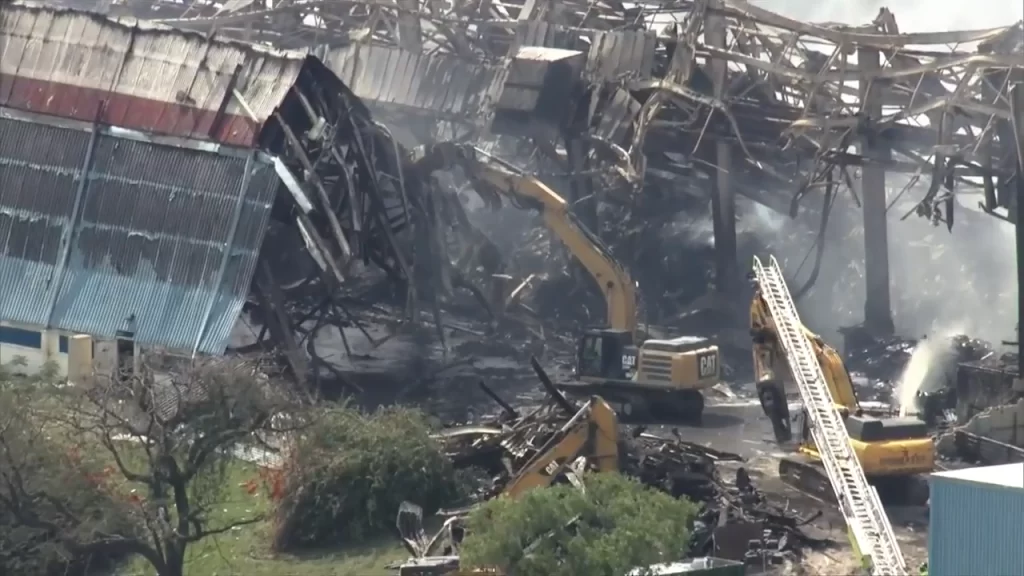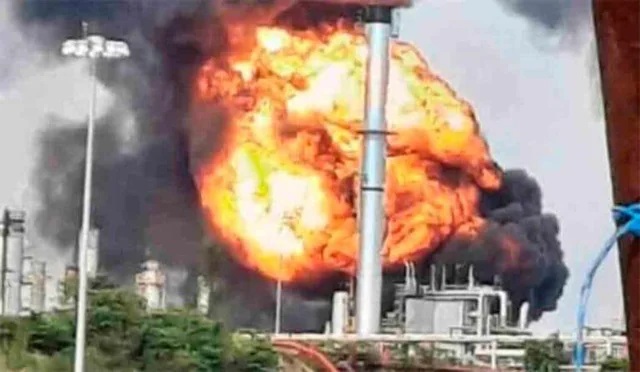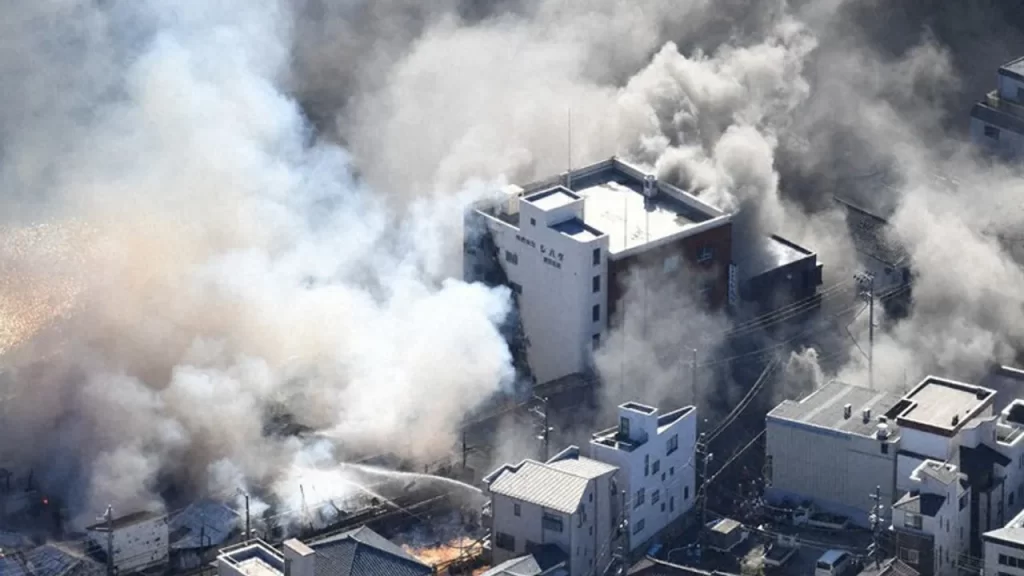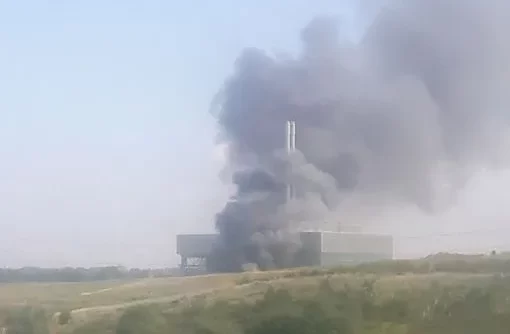FIRE RISK
Alarmingly, fires in waste-to-energy plants are commonplace, though most go unreported. Numerous fires and explosions result in major damage, causing plant shutdowns, injury, and death.
A guide to loss prevention titled ‘Fires in waste-to-energy power generation plants’, provides advice on the best practice engineering for fire prevention control systems, fire detection, and firefighting arrangements within waste-to-energy facilities.
The guide states the following:
“Fires in waste to energy plants continue to be a major cause of insurance loss. Commonly used fuels include waste streams such as municipal solid waste from kerbside collections, used tyres, waste wood, dried sewage sludge, and organic biomass.
The risks from waste fuel streams can include dust, spontaneous combustion, poor housekeeping, the delivery of already smouldering loads, ignition in bulk storage bins or conveying systems, and the use of hydraulically actuated processing equipment, flue gas filtration systems, and the use of combustion engine-powered loading shovels.”
Design and construction.
The guide also states that energy and insurance industries within the UK recognise and refer to the USA’s National Fire Protection Association (NFPA) and other associated NFPA organisation standards (NFPA 850, for example) for power plant design and construction. The NFPA’s standards are applied as the basis for best engineering practices in designing and installing fire protection systems in power plants, including waste-to-energy plants.
Convanta W-t-E plant fire in Doral, Florida

Despite the best engineering practices for designing and installing fire protection systems in waste-to-energy plants in the USA, major fires still occur.
On February 12, 2023, the Convanta Energy waste-to-energy plant in Doral, Florida, became engulfed in fire and burned for almost three weeks. The facility was built in 1985, and reports show that the plant had four fires in the four years prior to 2023. Reports also state that Florida’s Department of Environmental Protection warned Miami-Dade County of potential violations at the facility that included fire safety hazards, yet the plant continued to operate.
WASTE TO ENERGY PLANT FIRES NOT LIMITED TO OLDER MODELS

A deadly explosion at a waste treatment plant in Leverkusen, Germany, was probably caused by a chemical reaction, a provisional report has found.
Seven people were killed in the blast in the Chempark industrial area of Leverkusen on July 27, and a further 31 people were injured.
Storage tanks containing chlorinated solvents caught fire in the Currenta company’s waste processing centre, sending a huge plume of black smoke into the air.
Lithium-ion batteries
Most rubbish collection truck fires are reportedly started by disposed lithium-ion batteries. When damaged, these batteries cause thousands of rubbish truck fires each year. Lithium-ion batteries are now widely used in rechargeable electronic devices such as smartphones, e-bikes, laptops, cordless tools, and vaping devices. If crushed or ruptured in rubbish trucks and waste processing facilities, they can ignite and easily cause fires.
According to Auckland Council records, 46 fires have occurred in a range of collection vehicles or across three collection services, rubbish, and recycling trucks in the last four years all over the Auckland region. Officials believe that lithium-ion batteries are generally the cause of these fires.
Fire and Emergency NZ released the flyer below about Lithium-ion battery safety.
Lithium-Ion Battery Fire Shuts Down Major Tokyo Waste Disposal Facility

A major waste disposal facility in Tokyo’s Koto Ward has been forced to cease operations due to a fire believed to be triggered by a lithium-ion battery. The facility, integral in processing bulky waste from Tokyo’s 23 wards, is now grappling with a significant reduction in its processing capacity—now down to 75% of its original.
Incorrect disposal of Li-ion batteries costing Japan millions
According to Japan’s environment ministry, 12,765 fires were attributed to lithium-ion batteries in fiscal 2020, up from 9,732 the previous year. According to the National Institute of Technology and Evaluation (NITE), the 5,529 fires between 2018 and 2021 caused damage costs of approximately 11.1 billion yen (about NZ$125 million). A NITE representative said they believe “only the tip of the iceberg has come to light.”
W-t-E plants talking down significance of fires.
Unreported fires at waste-to-energy plants is a huge concern. Pollution mitigation technology is rendered useless when fires break out, and residents are subjected to dangerous emissions. An example of this was Viridor’s Beddington Lane incinerator plant, which had a significant fire on July 11, 2019.

‘Significant’ or ‘Major’, and a case for the HSE
Despite significant damage to the facility, Viridor classified the fire as a “significant incident”—one that falls short of being classified as a “major incident,” which would require it to be reported to the Health and Safety Executive as a “dangerous occurrence” (under RIDDOR 2013—the Reporting of Injuries, Diseases, and Dangerous Occurrences Regulations).
For a fire to be reportable under Schedule 2.2.25, it would have to “result(s) in the stoppage of that plant, or the suspension of normal work in those premises, for more than 24 hours.”
WASTE STORAGE
The proposed Waimate incinerator will store 42,000 tonnes of waste on-site in a purpose-built 8,000-square-metre warehouse. The plant will also have a feed bunker within the facility with a capacity of another 7,000 tonnes. SIRRL’s resource consent also states that there will be provisions for 100,000 litres of diesel storage.
The potential for a significant blaze at the Waimate incinerator, fueled by the combustible material and a single rogue lithium battery, is a grave concern. The Waimate District’s lack of resources to extinguish such a fire could lead to devastating results, as seen in the Doral facility incident in Florida.
Fire crews have sometimes left fires at W-t-E facilities to burn out to prevent groundwater contamination.
It’s also worth noting that overseas W-t-E plants generally source waste material from localised areas, meaning they don’t require waste storage on a large scale. SIRRL’s proposal applifies the risk by storing huge amounts of waste, diesel, and hazardous materials in bulk.
